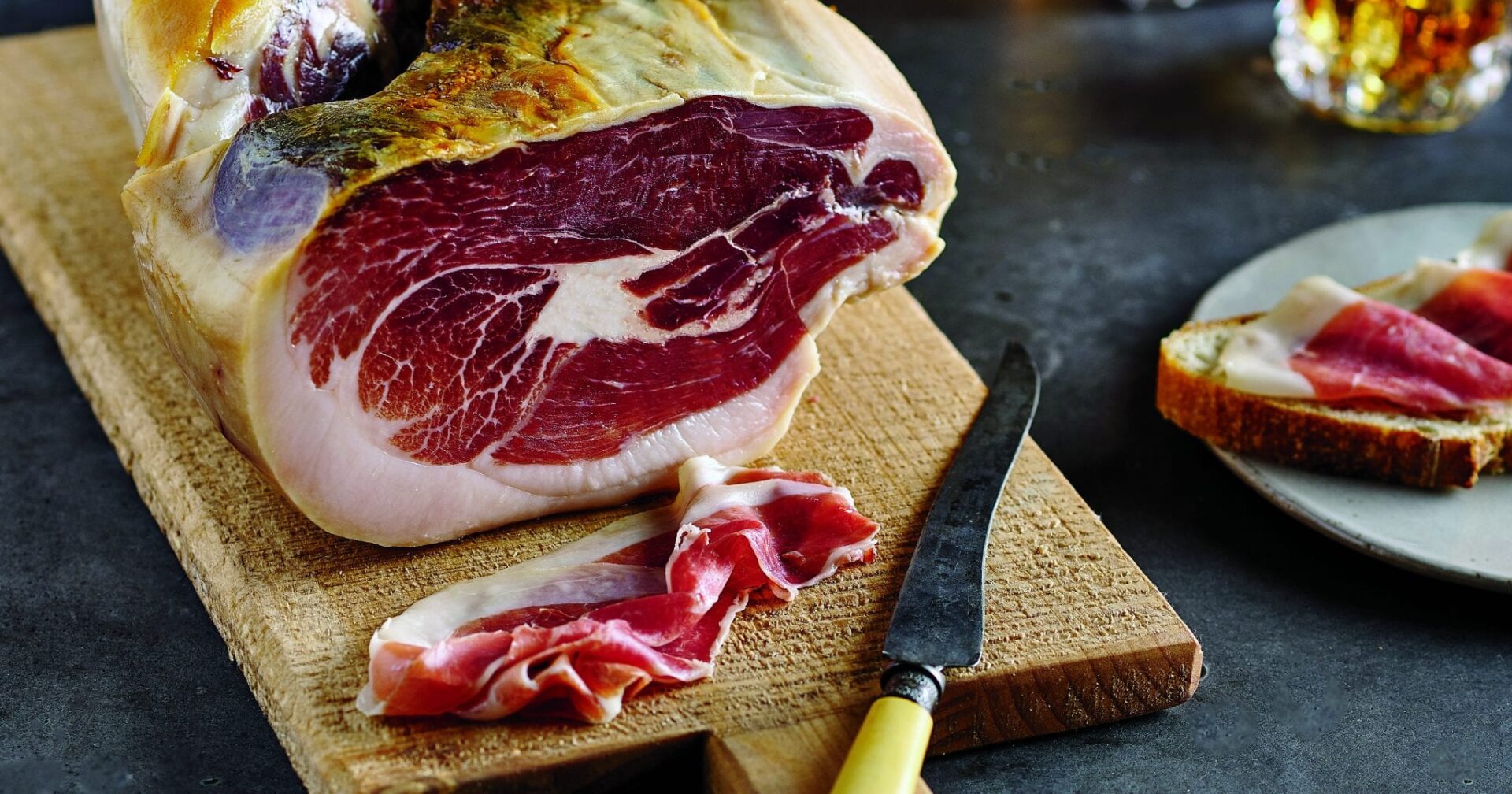Growing Up Edwards
The smell of hickory smoke hangs in the breeze around Surry, Virginia. This is ham country, where curing pork has been a way of life since before the first European settlers claimed the land as their own. Arriving at the confluence of the Chickahominy and James rivers in 1630, descendants of Henry VIII embarked on their American journey, where they learned how to cure meat from the native people as a means of survival. Among those early settlers were the forefathers of the Edwards family.
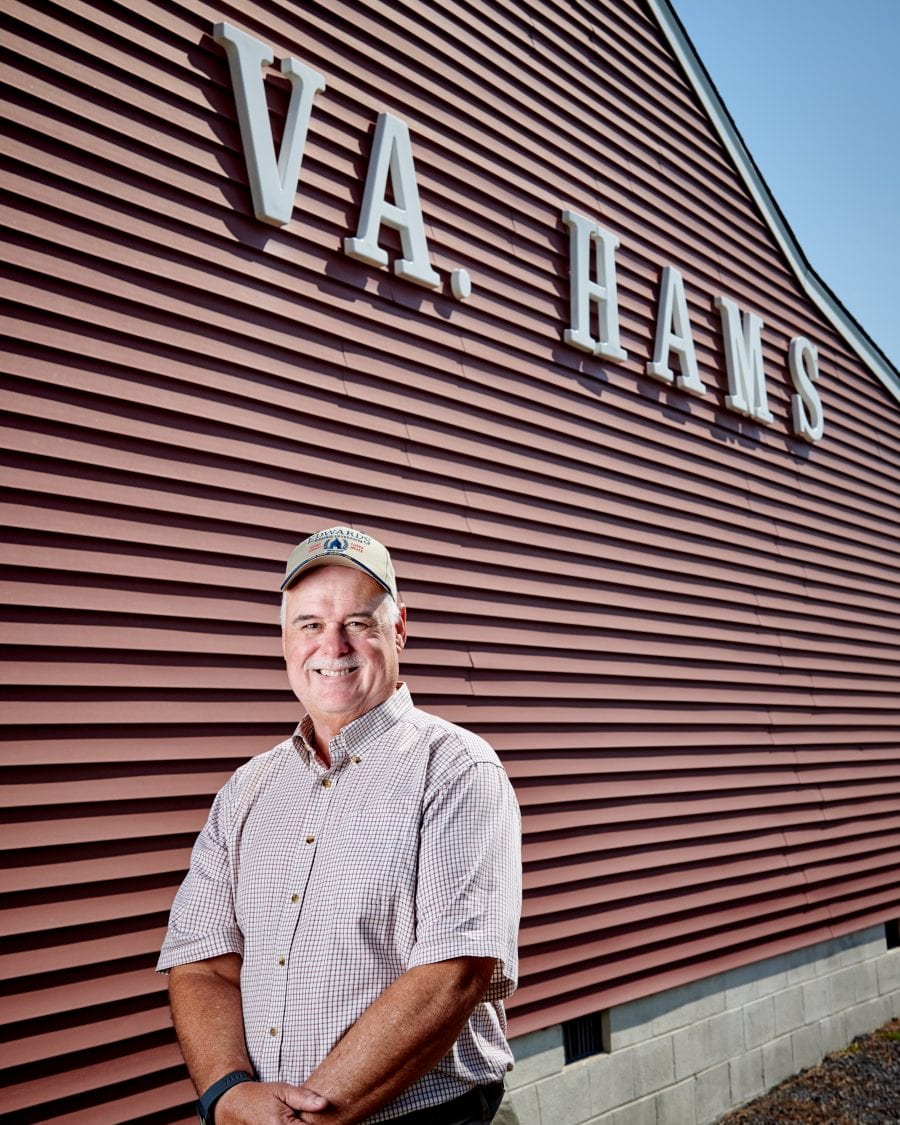
Ham has been the Edwards family business since at least 1925, when S. Wallace Edwards sold ham sandwiches to passengers on his Jamestown-Scotland Ferry for fifty cents apiece. In 1926, Edwards Smokehouse opened, selling their ten- to fourteen-month aged longshank Wigwam country ham. Born into the business, Sam Edwards III, like his father before him, has been working for the family enterprise as long as he can remember— as a little boy pushing fallen pecans out of the parking lot with an old broom, later splitting hickory logs, and eventually working inside, curing and hauling hams for hours on end. “I was so small that it was hard for me to pick up two ten-pound boxes and move them,” he recalls, sitting in the conference room of what is now Edwards’ headquarters.
During his high school summers, he spent the hours between his two- a-day football practices stamping out sausage patties, one at a time, by hand. Two workers could produce four hundred pounds of sausage in a day of plodding, monotonous work.
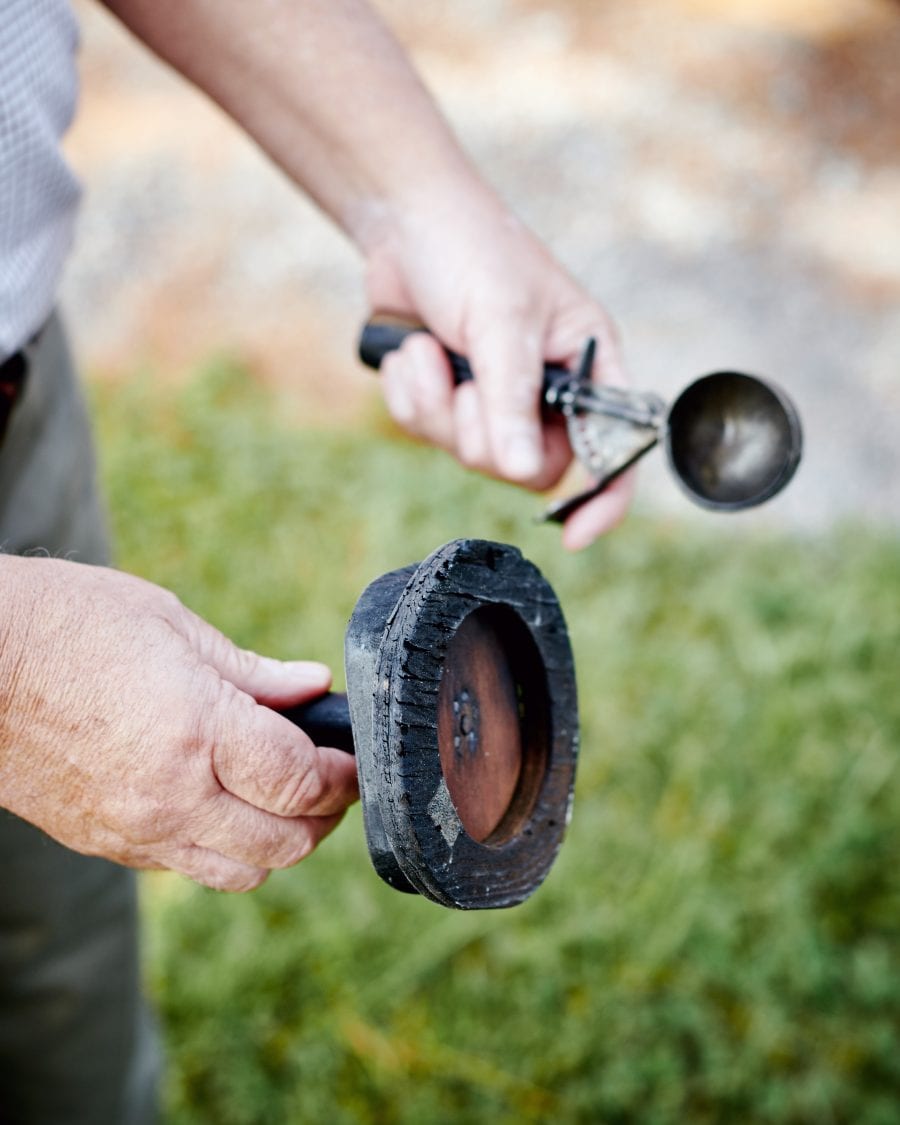
Over the years, the family grew their product line to include a petite ham, sweet ham, and, as of 2008, the chef darling Surryano, a stained-glass window pane of mahogany pork with a quivering ribbon of white fat. For years, Edwards researched the science of ham-curing to identify the exact formula required to create the great American European-style ham. The Surryano—Virginia’s version of the Spanish Serrano— is the result of that effort. The resulting flavor is earthy and mineral-tasting. “We call it twang,’” says Edwards, like the music plucked from a banjo. Edwards achieves that twang by controlling time itself—using temperature-controlled rooms to reproduce each season, mimicking a centuries-old process with new technology. After each fresh ham is massaged with salt, it rests in the chilly winter room before jetting over to the fifty-degree spring room to cure.
A weeklong smoke over hickory wood gives the ham its signature color and flavor, and then it ages in autumnal conditions, where it can be closely monitored until the ham is finally ready to consume. But in 2016, that well-honed ham machine came to an abrupt and unexpected stop. It was midday, and everyone was at lunch. Edwards was on a call at his desk when he smelled smoke, “not an unusual occurrence around here,” he remarks. But there was something different about this smell, something foreign and plastic. Edwards took his time getting off the phone, but as soon as his eyes fell on the smokehouse, he realized that something was very wrong. A jet of black smoke snaked up to the clouds from the center of the building. Fire unfurled rapidly in all directions from the electrical room.
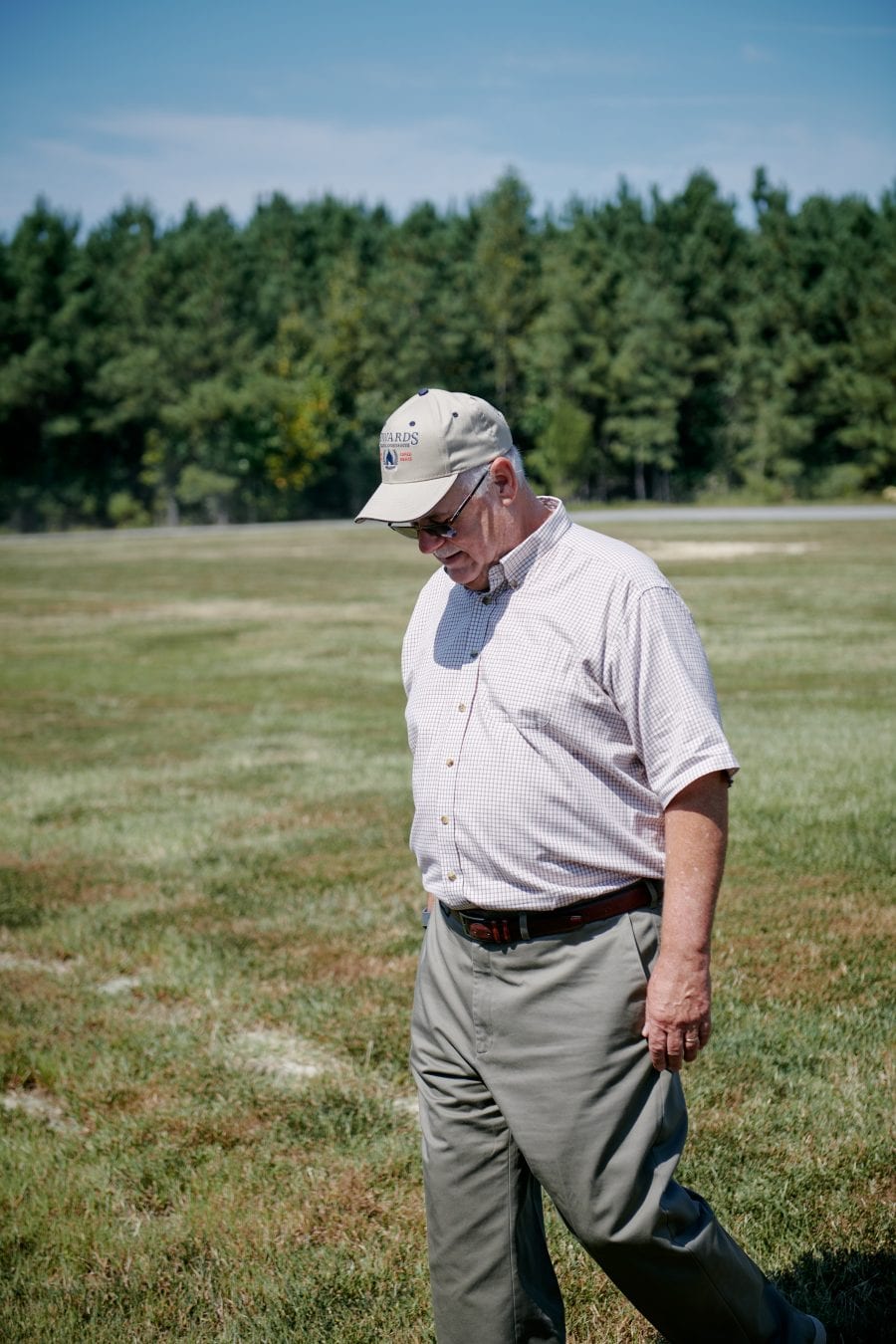
Tracing the ground where the smokehouse stood, Edwards recounts his thundering footsteps propelling him back to the gas line at the edge of the property; the call to 911; the agonizing reality of running out of water before the fire could be extinguished; the flames smoldering for a week, feeding on pork fat and sixty years of paperwork.
As they near the four-year anniversary of that January blaze, Edwards is mired in litigation, having taken their case—which alleges their insurance provider left them negligently underinsured—all the way to the Virginia Supreme Court. The wheels of justice have moved slower than the aging of Edwards’ finest hams, and much has been lost in the process. But, just like his father and grandfather before him, Edwards has adapted to keep his family business alive. He’s relied on a closely-monitored network of smokehouses in Virginia, North Carolina, Kentucky, Tennessee, and Missouri to produce Edwards’ hams according to his exact instructions.
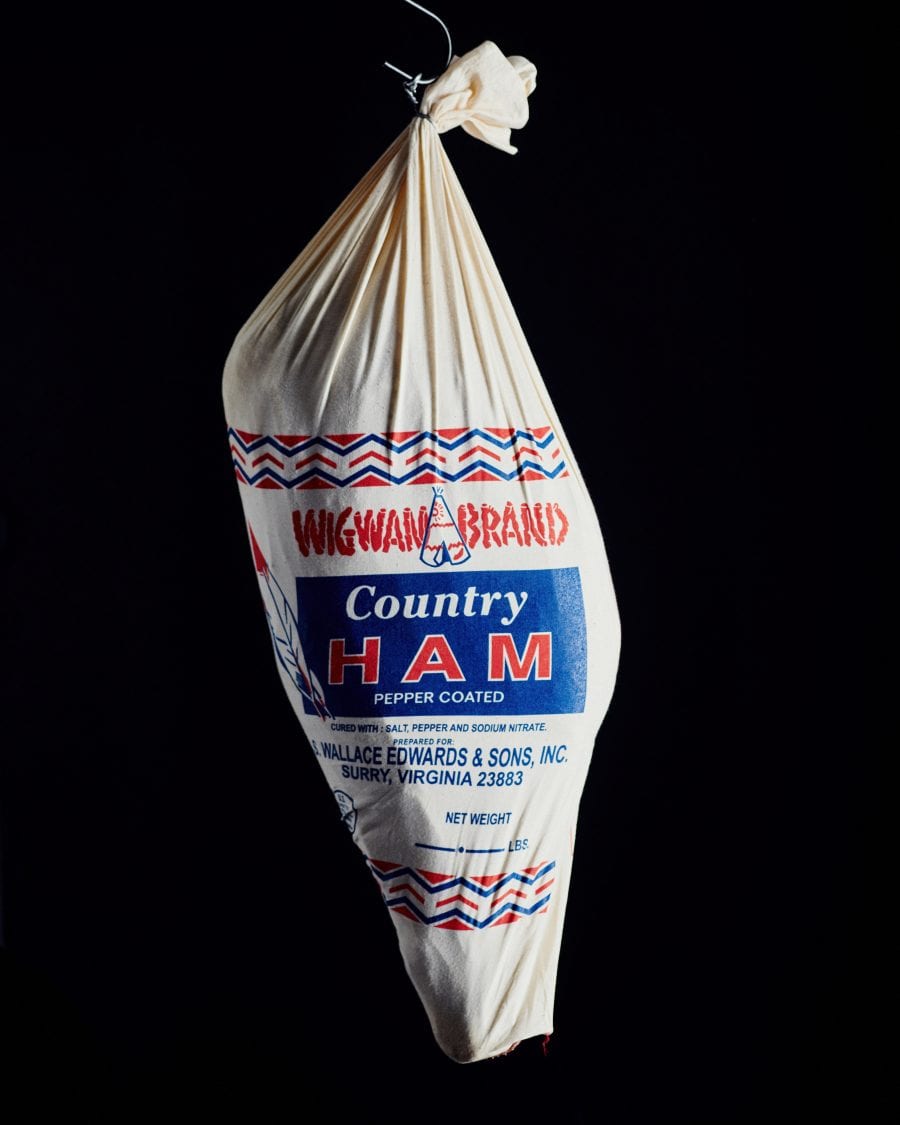
These days, many of Edwards’ recollections end with the refrain,“but we lost that in the fire,”like a picture of his grandfather presenting a ham to former Virginia governor and state senator Harry Byrd and a thick file folder containing mostly handwritten formulas and methods for curing ham. But the memories themselves are still vivid in his mind. Edwards recalls holidays at his grandparents’ house gathered around a slow-cooked Wigwam ham prepared by his grandmother, Emma, and carved by his grandfather. “We’d have the ham, turkey, candied yams, snap beans, oysters and crab imperial, super moist potato rolls, sweet pickles, collards. You didn’t go lackin’.” After dinner, the family would gather around a baby grand Steinway and sing Christmas carols until the children were ushered off to sleep so that Santa would make his appearance.
“I’m the one that does the ham now,” Edwards says, (though his son has taking over the carving duty). And no, he’s not tired of it, he’ll always be a ham man. “My favorite way to eat ham, to this day, is a well-aged ham, cooked like my grandmother did, sliced warm on homemade white bread, with crispy lettuce, butter on one side, and then the top piece of bread.” He slaps his hands together to make a sandwich. “You eat it just like that, while the bread is still warm and the lettuce is still crispy. Mmmf, that’s good.”

Deviled Country Ham Salad
share
trending content
-
New Restaurants in Arkansas
-
Shrimp and Grits: A History
by Erin Byers Murray -
Tea Cakes, A Brief History
by TLP Editors -
Gullah Geechee Home Cooking
by Erin Byers Murray -
A Cajun Christmas Menu
by TLP Editors
More From In the Field
-
From Pop-Up To Brick-and-Mortar
-
The Return of the Lynnhaven Oyster | Listen
-
What’s On the Horizon for 2024
-
Sorelle: La Dolce Vita in Vogue
-
Keya and Co. Turning Sadness into Sugar





